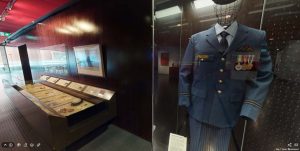Humanities Update – Connections from school to the world outside
With almost all the Humanities students back in class, continued use of Microsoft Teams has helped to maintain the connection to students outside of Australia or those who have been unable to return to Melbourne. On the first day of returning to campus, one Year 8 History class all used a single laptop camera to sing ‘happy birthday’ to a class member in China, who was visibly moved to see and hear the support from her classmates in Australia. Students across a range of Humanities subjects last week made use of devices to track developments in the USA’s Presidential election (including the Year 10 Globalisation elective, who happened to be studying the political dimensions of Globalisation). Technology has enabled us to maintain connections, but also as a platform to advance our understanding of the world we study.
Those very Year 8s who connected across the globe to a classmate, also worked together in groups on campus and with those online to create video ‘news’ reports about the Bubonic Plague that ravaged Asia and Europe in the 14th Century. The interest that students have shown in understanding societies grappling with the impacts of a pandemic has been enormous, while they have also developed skills in examining changes over time in response to such events, including by comparison to their own current experiences, epitomising being part of living history.
 Limited by COVID-19 restrictions, Year 9 History students were able to ‘visit’ the Shrine of Remembrance virtually this year. The presentation started with a drone flying across the Botanical Gardens and over St Kilda Road and eventually about the Shrine; it then circled the shrine, highlighting the entrance and the building itself. It settled on the sculpture of ‘Mother England’ and this was discussed in relation to Australia being a part of the British Empire, providing soldiers to fight a war that was so far away. The virtual tour then began inside of the building, where students and teachers toured the Sanctuary, the various rooms where exhibitions and artefacts are held. We learnt about the Gallipoli landing and the significance of ANZAC day, the historian focusing on the boat from the landing that is on display. They experienced artefacts and the uniforms of Nurses and Soldiers, weapons and gas masks were shown, and they learnt about the involvement of indigenous soldiers in the Australian war effort.
Limited by COVID-19 restrictions, Year 9 History students were able to ‘visit’ the Shrine of Remembrance virtually this year. The presentation started with a drone flying across the Botanical Gardens and over St Kilda Road and eventually about the Shrine; it then circled the shrine, highlighting the entrance and the building itself. It settled on the sculpture of ‘Mother England’ and this was discussed in relation to Australia being a part of the British Empire, providing soldiers to fight a war that was so far away. The virtual tour then began inside of the building, where students and teachers toured the Sanctuary, the various rooms where exhibitions and artefacts are held. We learnt about the Gallipoli landing and the significance of ANZAC day, the historian focusing on the boat from the landing that is on display. They experienced artefacts and the uniforms of Nurses and Soldiers, weapons and gas masks were shown, and they learnt about the involvement of indigenous soldiers in the Australian war effort.
While other year levels also made use of various technological platforms to further their learning, the students who are completing Humanities Unit 3 and 4 subjects in 2020, including our Year 12 students, have returned to using more basic technology in their final weeks of school: pen and paper. Students are still making extensive use of laptops to refine revision and summary notes, access information and practice exams, communicate and meet with their teachers and attend revision lectures, to name just a few examples. However, with handwritten exams continuing to be the norm, practising responses with the use of a pen, self-marking these (practising being the assessor) and then receiving their teachers’ feedback, marks the concluding stages for Year 12 study in Humanities, and we wish them all the best in their exams.
Whether it be Year 12 or Year 8, the real world is never far from any Humanities subject. This term (and year) has just added new technological dimensions to the way in which students and teachers make those important connections from school to the world outside.


